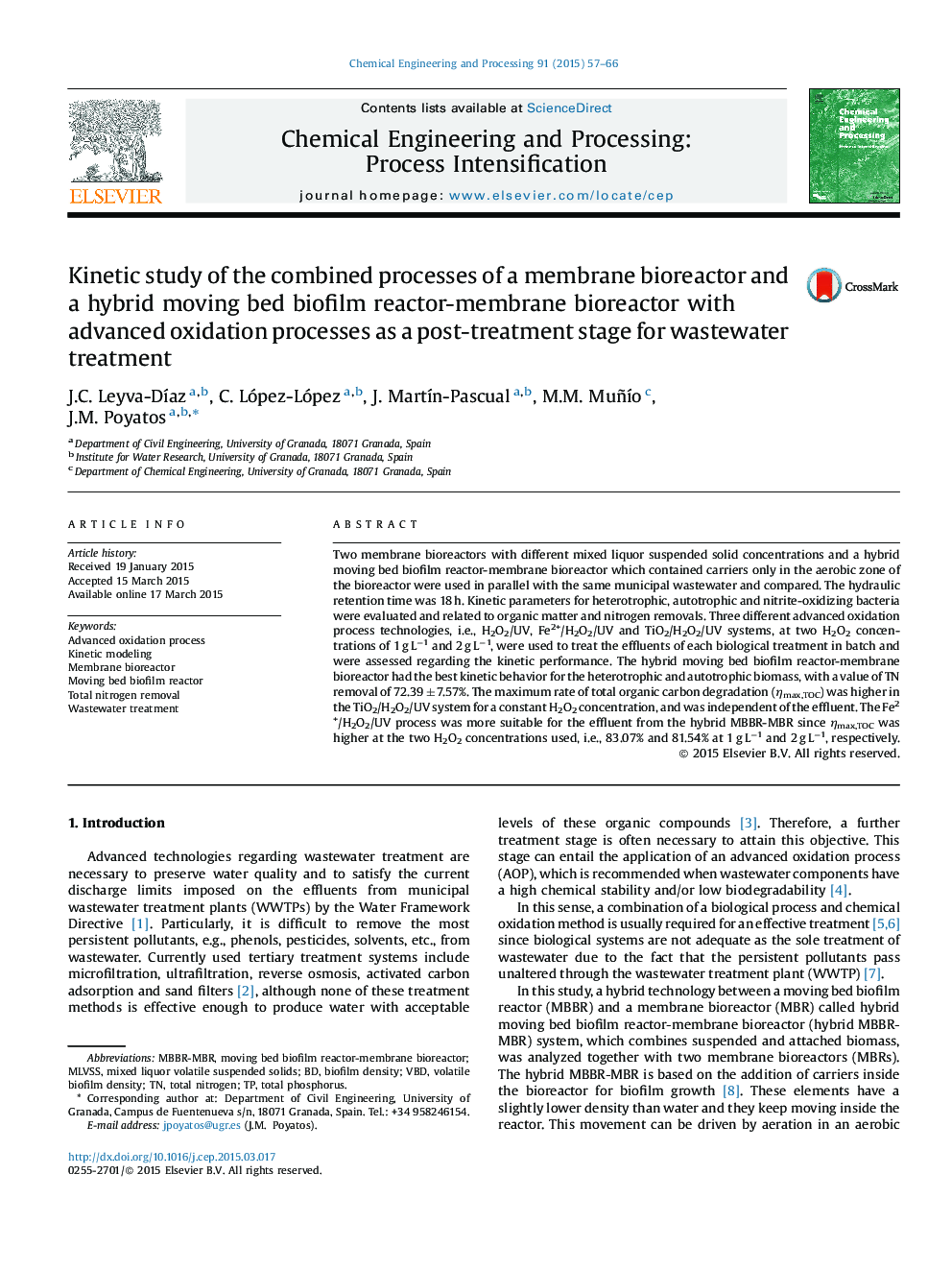| کد مقاله | کد نشریه | سال انتشار | مقاله انگلیسی | نسخه تمام متن |
|---|---|---|---|---|
| 686888 | 1460086 | 2015 | 10 صفحه PDF | دانلود رایگان |
• Two MBR systems and a hybrid MBBR-MBR were compared for wastewater treatment.
• Three different AOP technologies were compared after the biological process.
• Hybrid MBBR-MBR had the best kinetics regarding heterotrophic and autotrophic biomass.
• TiO2/H2O2/UV system had maximum TOC degradation rate at constant H2O2 concentration.
Two membrane bioreactors with different mixed liquor suspended solid concentrations and a hybrid moving bed biofilm reactor-membrane bioreactor which contained carriers only in the aerobic zone of the bioreactor were used in parallel with the same municipal wastewater and compared. The hydraulic retention time was 18 h. Kinetic parameters for heterotrophic, autotrophic and nitrite-oxidizing bacteria were evaluated and related to organic matter and nitrogen removals. Three different advanced oxidation process technologies, i.e., H2O2/UV, Fe2+/H2O2/UV and TiO2/H2O2/UV systems, at two H2O2 concentrations of 1 g L−1 and 2 g L−1, were used to treat the effluents of each biological treatment in batch and were assessed regarding the kinetic performance. The hybrid moving bed biofilm reactor-membrane bioreactor had the best kinetic behavior for the heterotrophic and autotrophic biomass, with a value of TN removal of 72.39 ± 7.57%. The maximum rate of total organic carbon degradation (ηmax,TOC) was higher in the TiO2/H2O2/UV system for a constant H2O2 concentration, and was independent of the effluent. The Fe2+/H2O2/UV process was more suitable for the effluent from the hybrid MBBR-MBR since ηmax,TOC was higher at the two H2O2 concentrations used, i.e., 83.07% and 81.54% at 1 g L−1 and 2 g L−1, respectively.
Journal: Chemical Engineering and Processing: Process Intensification - Volume 91, May 2015, Pages 57–66
